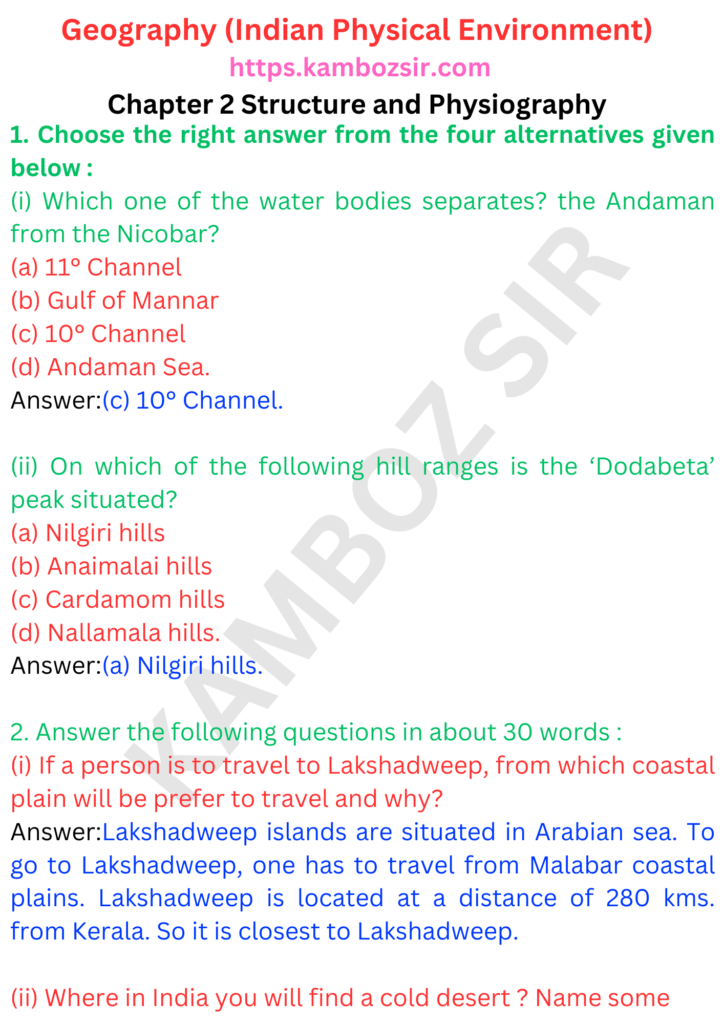Class 11 Geography Chapter 2 Structure and Physiography Solution
Class 11 Geography Chapter 2 Structure and Physiography Solution
In Chapter 2 of Class 11 Geography, we delve into the topic of the structure and physiography of the Earth’s crust. This chapter explores the different layers and structures that make up the Earth’s surface and their impact on the formation of various landforms.
We begin by understanding the internal structure of the Earth, which consists of the core, mantle, and crust. The core is the innermost layer, composed of solid and molten materials, while the mantle surrounds the core and is primarily made up of semi-solid rock. The crust, which is the outermost layer, is the thinnest and the most important in terms of our study of landforms.
Next, we explore the different types of rocks that form the Earth’s crust, including igneous, sedimentary, and metamorphic rocks. We study the processes of rock formation, such as volcanic activity, weathering, erosion, and tectonic movements, which contribute to the creation of diverse landforms.


